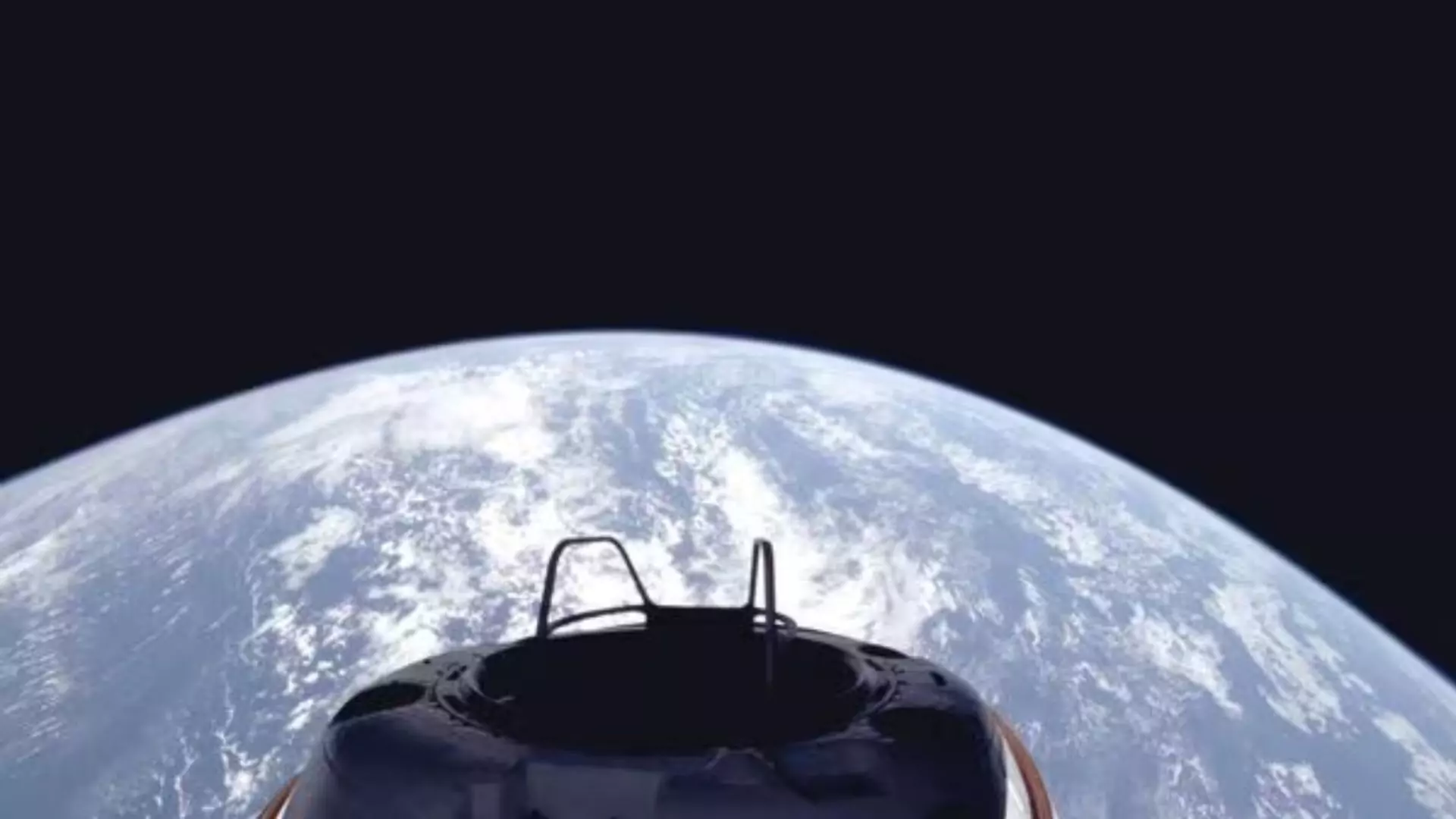After venturing further into space than any humans have in the past fifty years, the SpaceX Polaris Dawn mission is poised to make history with the first-ever spacewalk conducted by non-professional astronauts. The mission, led by billionaire entrepreneur Jared Isaacman, launched from the Kennedy Space Center in Florida early Tuesday, reaching an impressive altitude of 870 miles (1,400 kilometers)—more than three times higher than the International Space Station.
Mission Reaches Dangerous Inner Van Allen Belt
The Polaris Dawn mission entered a region of space known as the inner Van Allen radiation belt, a zone filled with high-energy particles that pose significant risks to space travelers. The crew’s Dragon spacecraft initially reached an elliptical orbit with a low point of 120 miles and a high of 430 miles, setting the stage for the mission’s highlight: an extravehicular activity (EVA) scheduled for 0958 GMT on Thursday, with a backup window on Friday.
ALSO READ | NASA Telescope Unveils Super Jupiter Which Takes 250 Years To Orbit Around Its Star | NewsX
SpaceX delayed the planned spacewalk by several hours on Thursday morning without providing a specific reason. A live webcast of the event is set to begin about an hour before the EVA on SpaceX’s official website.
Preparing for Spacewalk: A Complex Process
Before stepping out into the vacuum of space, the crew must undergo a “pre-breathe” procedure to remove nitrogen from their blood, a necessary step to avoid decompression sickness, commonly known as “the bends.” Following this, the cabin pressure will be gradually reduced to match the conditions of outer space.
Once the hatch opens, Isaacman and his crewmate, SpaceX engineer Sarah Gillis, will perform a series of coordinated movements from a structure attached to the hatch called “Skywalker.” Equipped with hand and footholds, the duo will conduct the spacewalk in what Isaacman humorously described as “a little bit of a dance” during a press conference.
Testing Next-Generation Spacesuits
The main goal of the EVA is to test SpaceX’s next-generation spacesuits, which include features such as heads-up displays, helmet cameras, and enhanced joint mobility. Unlike early spacewalks conducted by Soviet cosmonaut Alexei Leonov and NASA’s Ed White in the 1960s, Isaacman and Gillis will not drift tethered in open space. Instead, they will remain securely attached to the Crew Dragon spacecraft, which orbits Earth at approximately 17,500 mph.
Due to the absence of an airlock on the Crew Dragon, the entire crew will be exposed to the vacuum of space for the duration of the spacewalk, which is expected to last around two hours. After the spacewalk is completed and the hatch is sealed, the cabin will be repressurized, and the oxygen and nitrogen levels will be restored to normal.
Mission pilot Scott Poteet and SpaceX engineer Anna Menon will oversee critical support systems during the EVA, while Isaacman and Gillis are expected to each spend about 15 to 20 minutes partially outside the spacecraft.
A Risky Endeavor for Commercial Space Exploration
“This is another watershed event in the march toward commercialization of space for transportation,” said former NASA administrator Sean O’Keefe. He emphasized the increased risk, stating, “The risk is greater than zero, that’s for sure, and it’s certainly higher than anything that has been accomplished on a commercial basis.” He likened the Polaris Dawn crew’s efforts to those of early aviators who laid the groundwork for modern air travel.
The Polaris Program: A Pioneering Private Space Initiative
The Polaris Dawn mission is the first in a series of three missions under the Polaris program, a collaborative effort between Jared Isaacman and SpaceX. Financial details of the program remain undisclosed, but Isaacman, the 41-year-old CEO of Shift4Payments, reportedly invested $200 million in the 2021 all-civilian SpaceX Inspiration4 mission, showcasing his commitment to pushing the boundaries of private space exploration.
Over two years of rigorous training prepared the crew for this groundbreaking mission, including extensive simulations, skydiving, centrifuge training, scuba diving, and climbing an Ecuadorian volcano. Alongside the spacewalk, the crew will conduct 36 scientific experiments, including testing laser-based satellite communications with SpaceX’s Starlink constellation and using contact lenses embedded with microelectronics to monitor changes in eye pressure and shape in space.
Future Polaris Missions: Aiming for Mars
The ultimate goal of the Polaris program is the final mission, which plans to be the first crewed flight of SpaceX’s Starship—a next-generation spacecraft crucial to Elon Musk’s vision of colonizing Mars. As the Polaris Dawn mission continues to break new ground, it not only sets the stage for future private space ventures but also marks a significant step toward the broader commercial utilization of space.


















